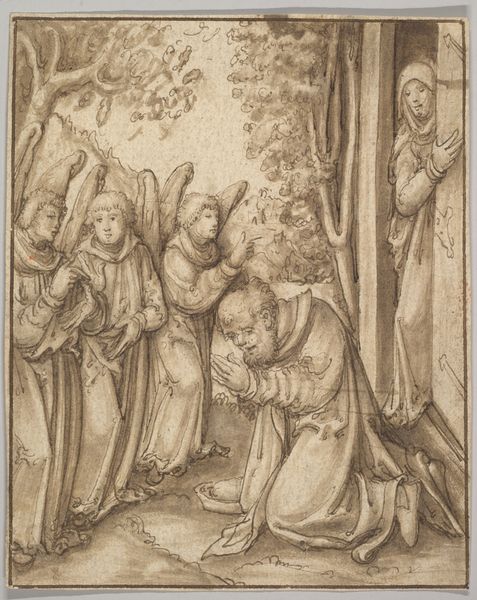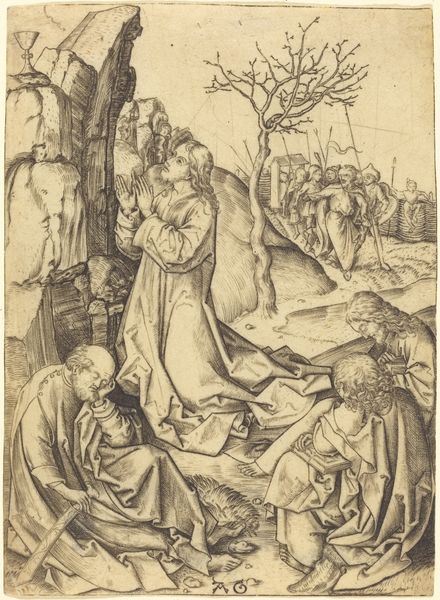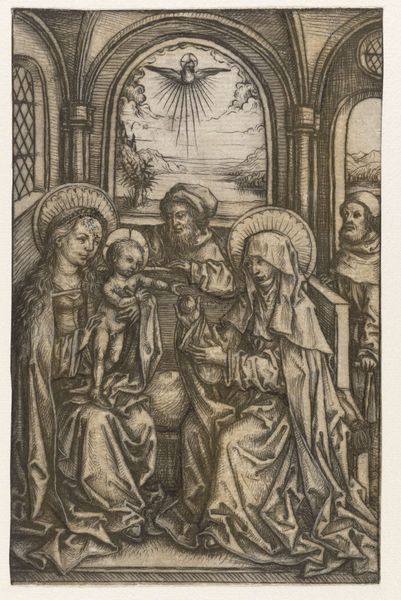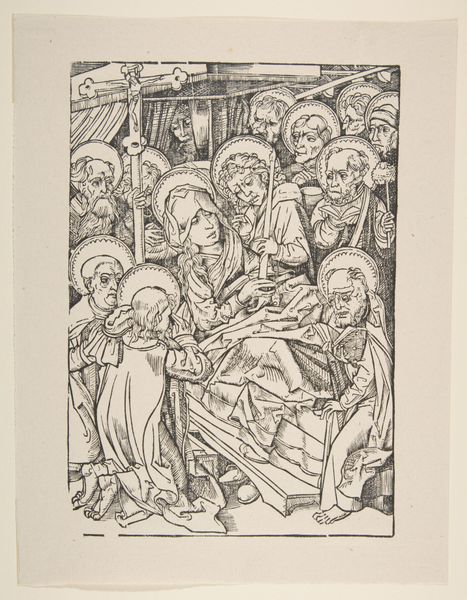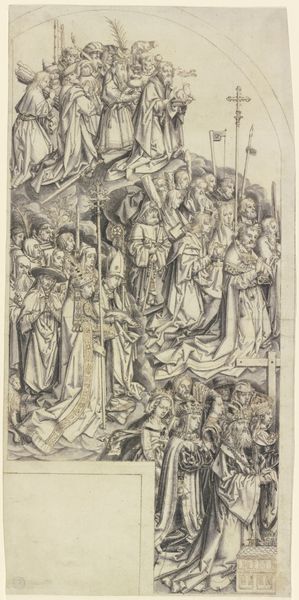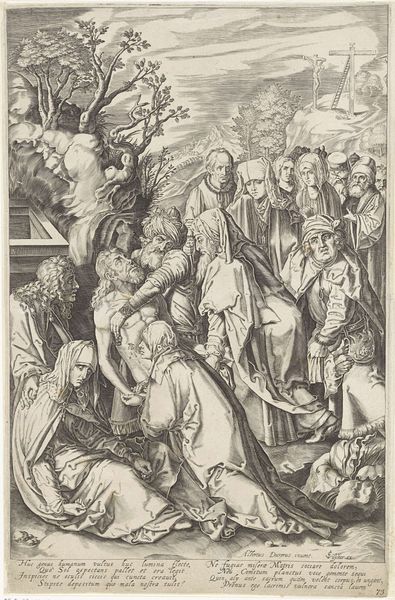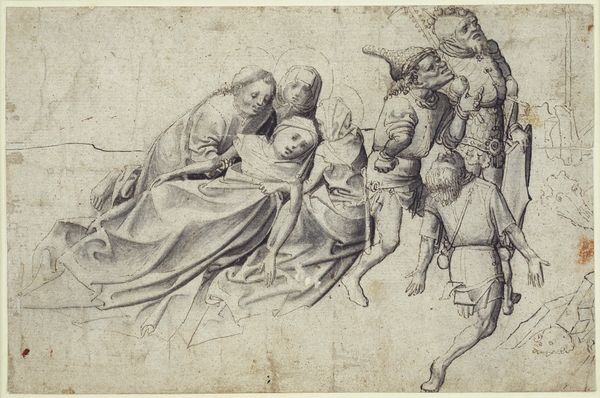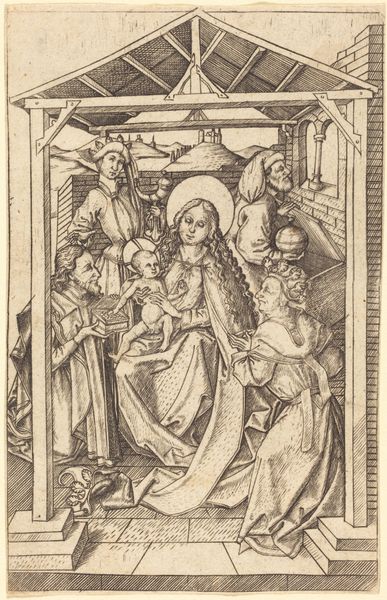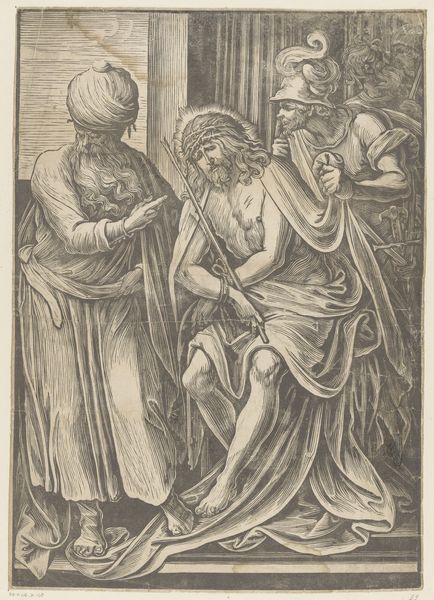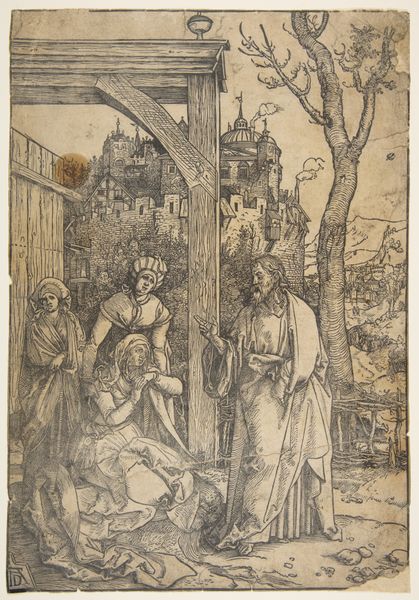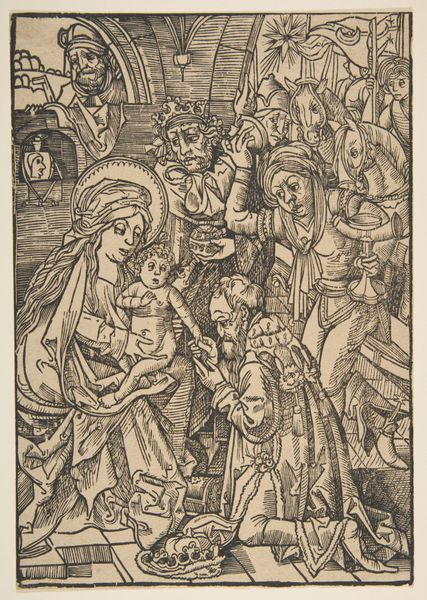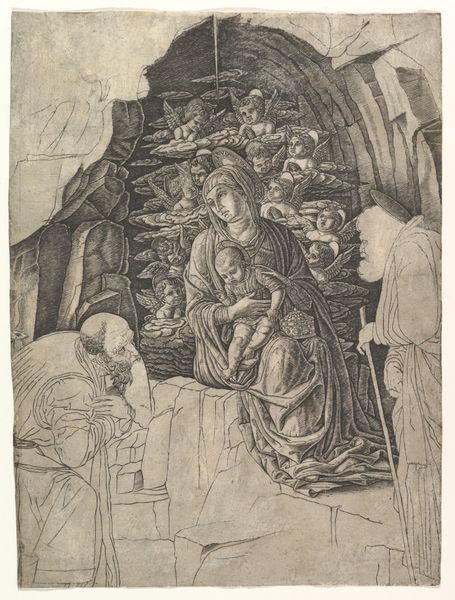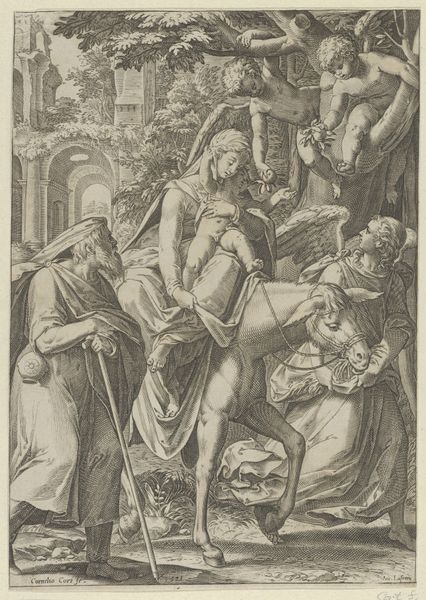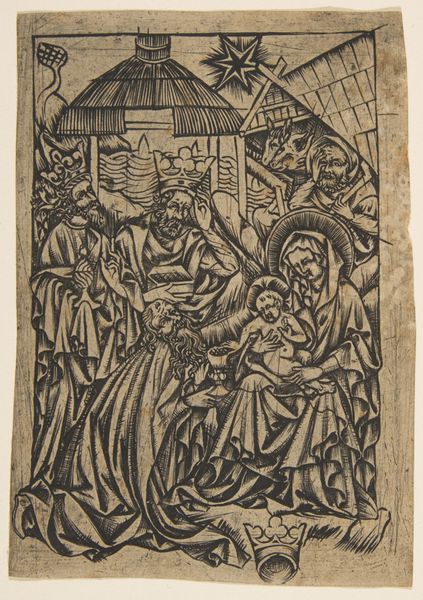
drawing, ink
#
drawing
#
medieval
#
narrative-art
#
figuration
#
11_renaissance
#
ink
#
history-painting
Copyright: Public Domain
Editor: Here we have Hans Burgkmair's "The Death of Mary," an ink drawing from around 1520. There’s a somber mood to it, quite crowded too, with all these figures surrounding Mary. What’s your interpretation of the work? Curator: Burgkmair created this piece at a pivotal time. The printing press had revolutionized access to images, allowing artists like Burgkmair to disseminate their work widely. How might this drawing have functioned in the broader religious culture of the time? Was it meant for personal devotion, or perhaps as a model for larger altarpieces? The politics of imagery were quite charged during the Renaissance, particularly with the rise of Protestantism. Editor: I hadn’t thought about its distribution. So, was this image meant to promote a certain understanding of Mary within these religious and political tensions? Curator: Precisely. Notice how the artist depicts Mary’s death surrounded by figures who seem to both mourn and honor her. The scene visually reinforces the importance of Mary within Catholic tradition at a time when her role was being questioned by reformers. Who gets to tell these stories, and whose interpretations become dominant are crucial questions to ask. Editor: It’s interesting how a single drawing can participate in a much larger conversation about religious authority and cultural values. It’s a lot more political than I first imagined! Curator: It reflects how images were integral to negotiating cultural values and religious doctrine during the Renaissance. Consider how the institutional support for artists and the mechanisms for disseminating their work influenced the production and reception of art in society. Editor: So, Burgkmair wasn’t just making pretty pictures; he was contributing to a broader cultural and political discourse. I see that now. Thanks for sharing your perspective!
Comments
No comments
Be the first to comment and join the conversation on the ultimate creative platform.
